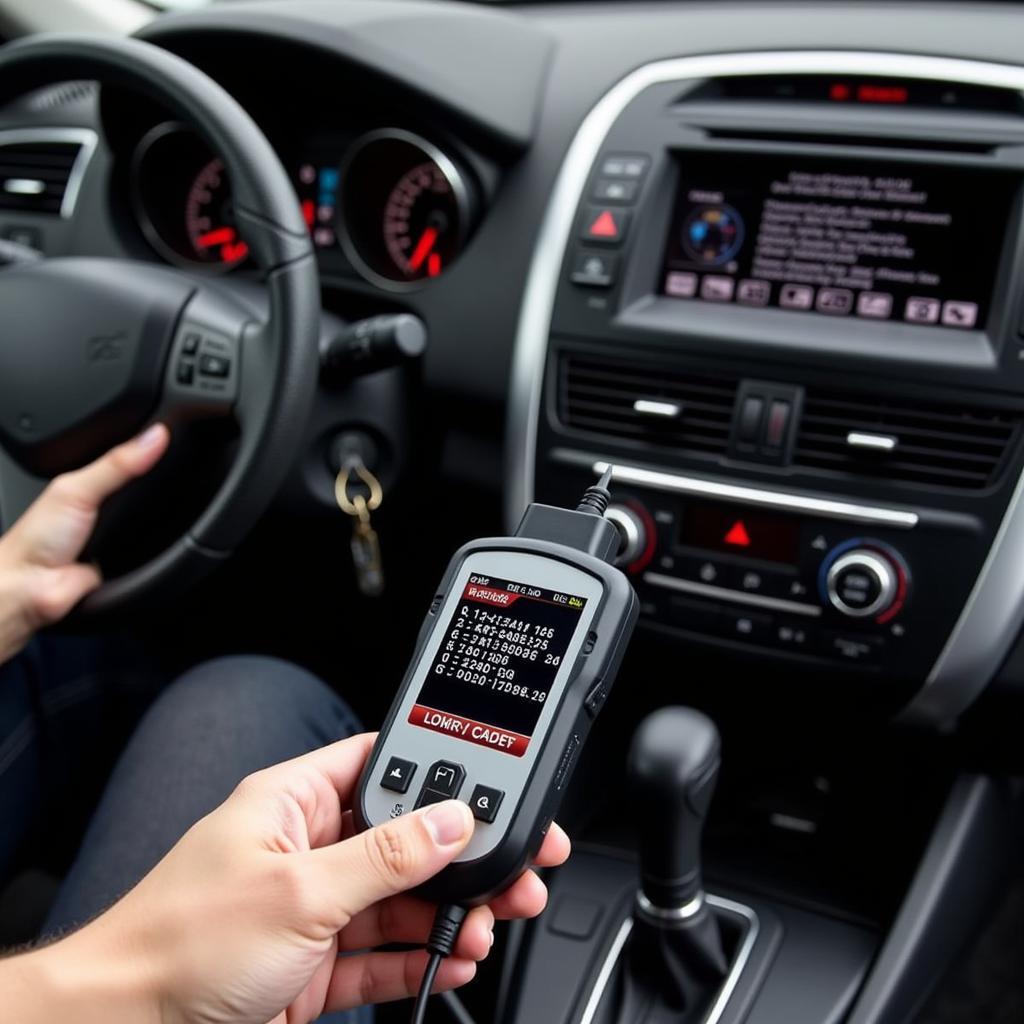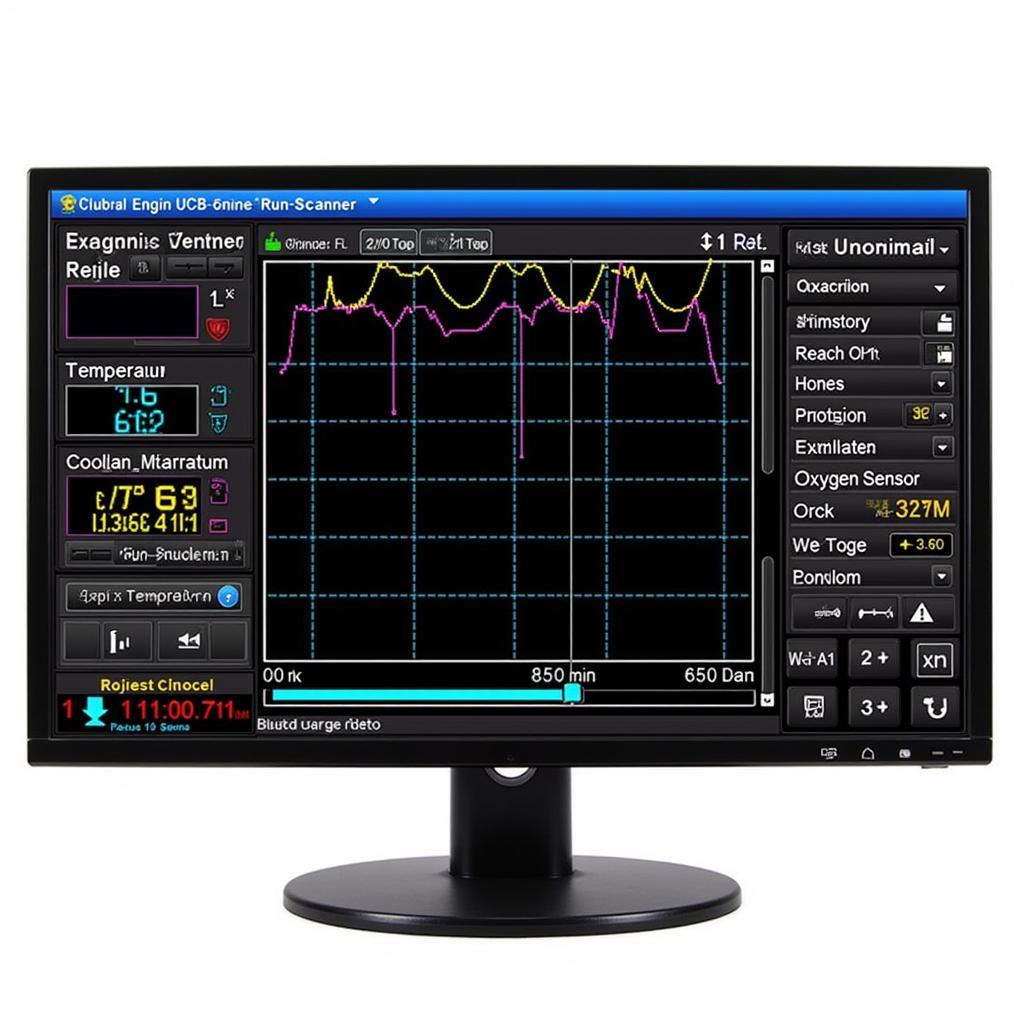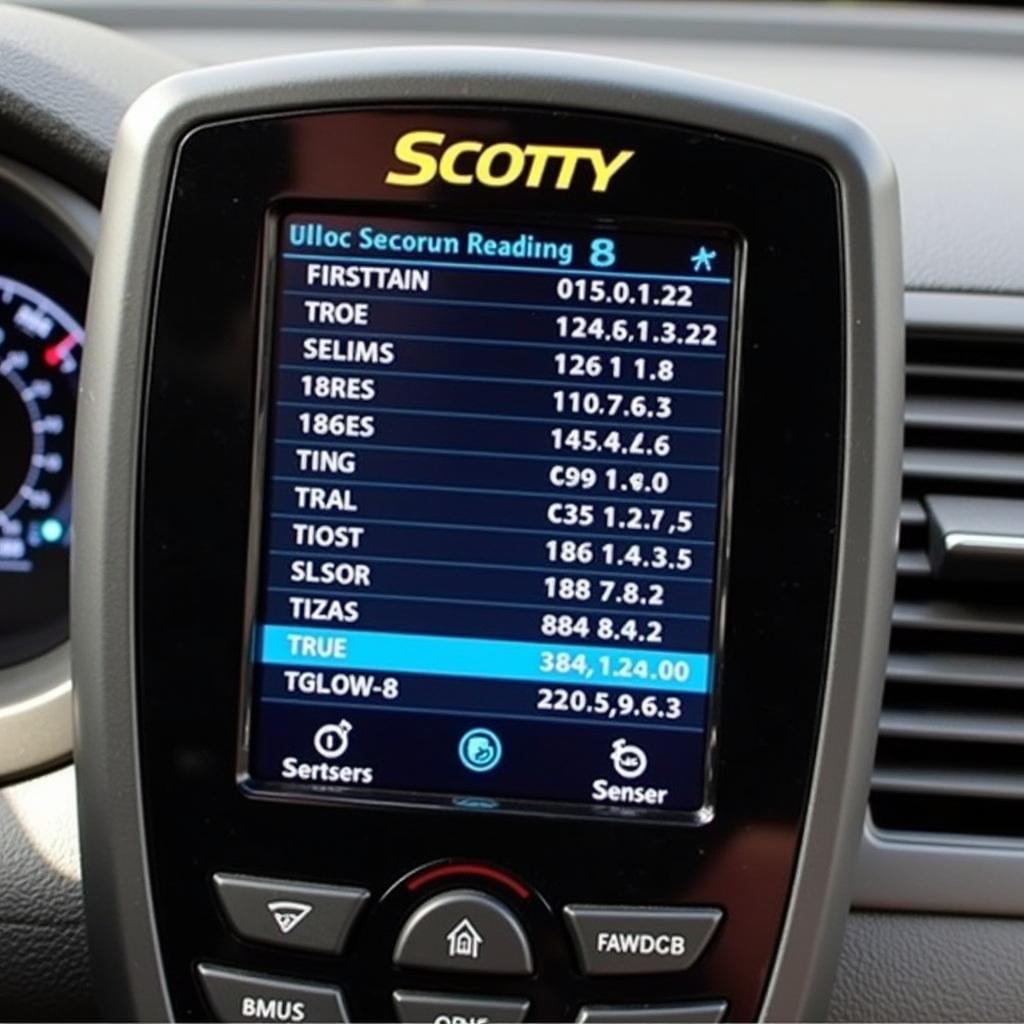Car trouble can be a real headache. From that dreaded check engine light to performance issues, diagnosing the problem is the first step towards a solution. That’s where Scanner Codes For Cars come in. These codes, accessed through an OBD-II (On-Board Diagnostics) scanner, unlock a wealth of information about your vehicle’s health.
Understanding these codes empowers car owners, mechanics, and technicians to pinpoint issues quickly and efficiently. Whether you’re a DIY enthusiast or a seasoned professional, this comprehensive guide will delve into the world of scanner codes, explaining what they are, how to interpret them, and how they can save you time and money. Similar to a fix scanner for cars, this knowledge can help you fix problems yourself.
What are Scanner Codes for Cars?
Scanner codes, also known as Diagnostic Trouble Codes (DTCs), are alphanumeric codes that represent specific malfunctions detected by your car’s onboard computer. When a sensor detects a problem, it triggers a code that’s stored in the car’s computer. These codes can range from minor issues like a loose gas cap to more serious problems like a faulty transmission.
How to Read Scanner Codes
Each code follows a specific format. For example, the code P0301 indicates a misfire in cylinder 1. The first letter indicates the system (P for Powertrain, B for Body, C for Chassis, U for Network). The following numbers further specify the nature of the problem. Understanding this structure is key to accurate diagnosis.
Why are Scanner Codes Important?
Scanner codes provide a starting point for troubleshooting car problems. They eliminate guesswork, saving you time and money on unnecessary repairs. Imagine trying to diagnose a rough idle without scanner codes. You might replace spark plugs, ignition coils, and fuel injectors only to find the problem was a faulty oxygen sensor. Scanner codes help you pinpoint the issue immediately.
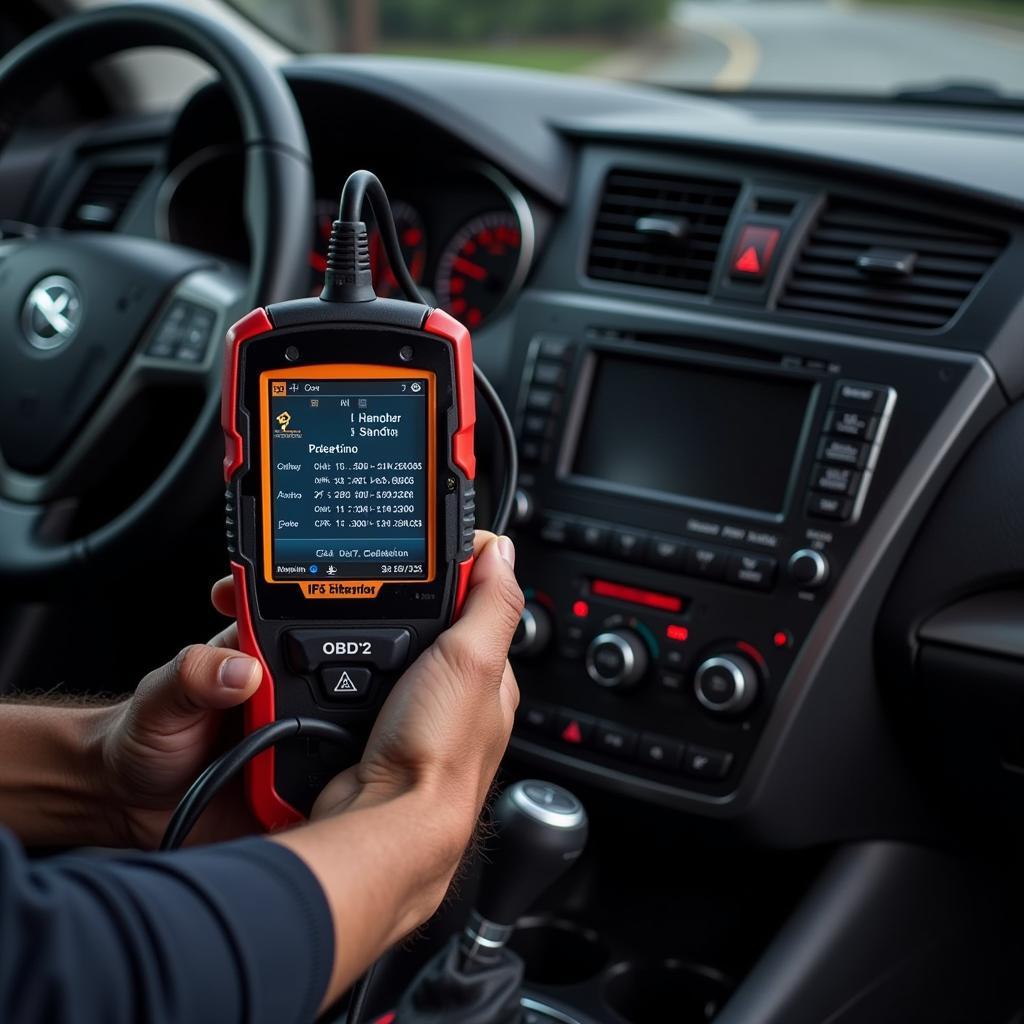 OBD2 scanner displaying car diagnostic trouble codes
OBD2 scanner displaying car diagnostic trouble codes
Types of OBD-II Scanners
There are various types of OBD-II scanners available, ranging from basic code readers to advanced professional scan tools. Basic code readers simply display the codes, while more advanced scanners offer live data, graphing capabilities, and even bi-directional control, allowing you to test components. For DIYers, a basic code reader may suffice, but professionals will benefit from the enhanced features of a professional scan tool. This is similar to the concept of a network scaner tool, but focused on your vehicle’s internal network.
Choosing the Right Scanner
Choosing the right scanner depends on your needs and budget. Consider factors like the features offered, ease of use, and compatibility with your vehicle’s make and model. An oem scanner for car can provide more specific information for certain vehicle makes.
How to Use a Car Code Scanner
Using a car code scanner is relatively straightforward. Locate your car’s OBD-II port, usually under the dashboard on the driver’s side. Plug the scanner in, turn the ignition on, and follow the scanner’s instructions to retrieve the codes. Some scanners, such as an elm327 v2.1 obd2 ii bluetooth diagnostic car auto interface scanner, can even connect wirelessly.
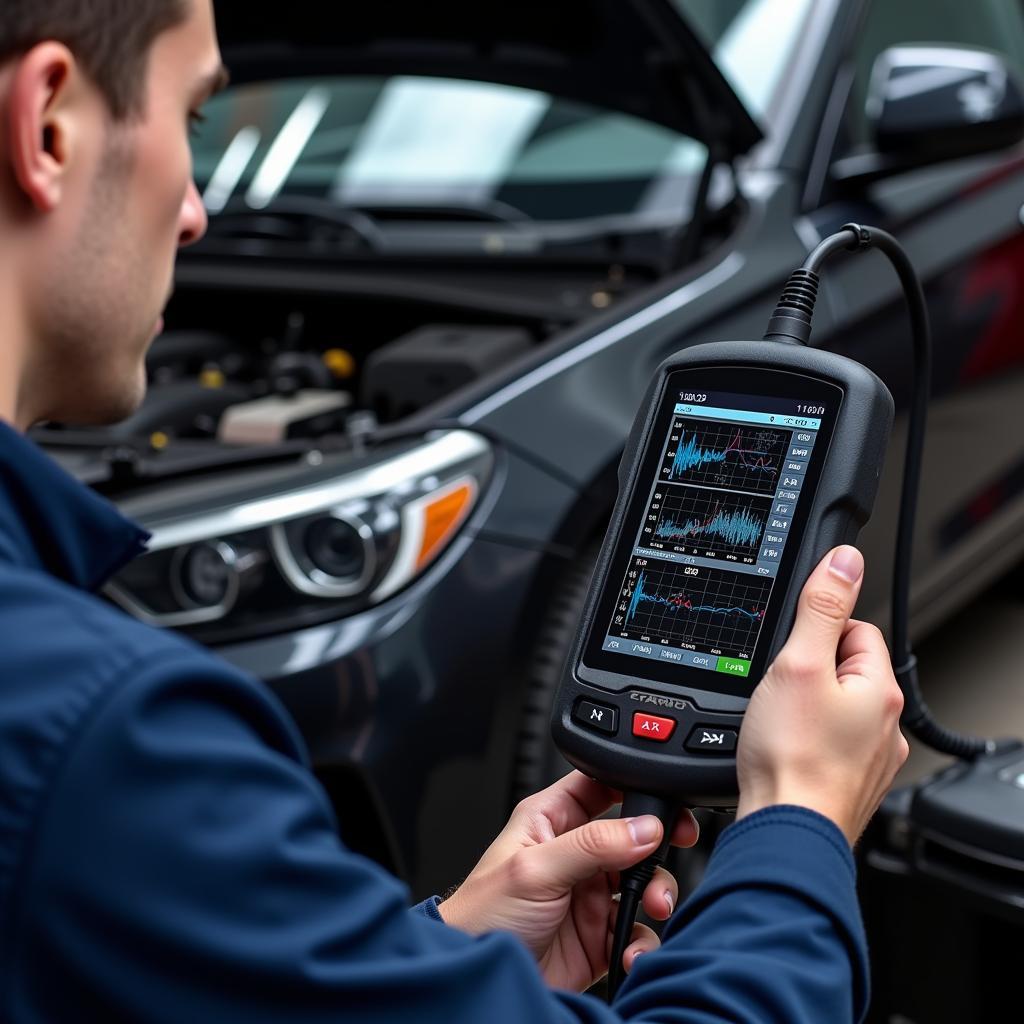 Mechanic using advanced diagnostic scan tool on a vehicle
Mechanic using advanced diagnostic scan tool on a vehicle
Common Scanner Codes and Their Meanings
While there are thousands of possible codes, some are more common than others. P0420 (Catalyst System Efficiency Below Threshold) often indicates a failing catalytic converter, while P0171 (System Too Lean Bank 1) suggests a problem with the air-fuel mixture. Understanding these common codes can help you quickly identify potential issues. If you’re looking for a ” car code scanner near me,” there are many options available.
What to Do After Retrieving Codes
Simply retrieving the codes is only the first step. Researching the code’s meaning and performing further diagnostic tests are essential. Don’t immediately replace parts based solely on the code. Use the code as a starting point for a thorough investigation.
Expert Insights
John Smith, a seasoned automotive diagnostician, emphasizes, “Scanner codes are invaluable tools, but they’re not a magic bullet. They provide clues, not definitive answers. Always combine code analysis with thorough visual inspections and diagnostic testing.”
Conclusion
Scanner codes for cars are essential for efficient and accurate car diagnostics. Whether you’re a DIY enthusiast or a professional technician, understanding these codes empowers you to address car problems effectively. Remember, these codes are a starting point, not the final answer. Combine code analysis with other diagnostic techniques for the best results. For expert advice and assistance, connect with ScanToolUS at +1 (641) 206-8880 or visit our office at 1615 S Laramie Ave, Cicero, IL 60804, USA.

